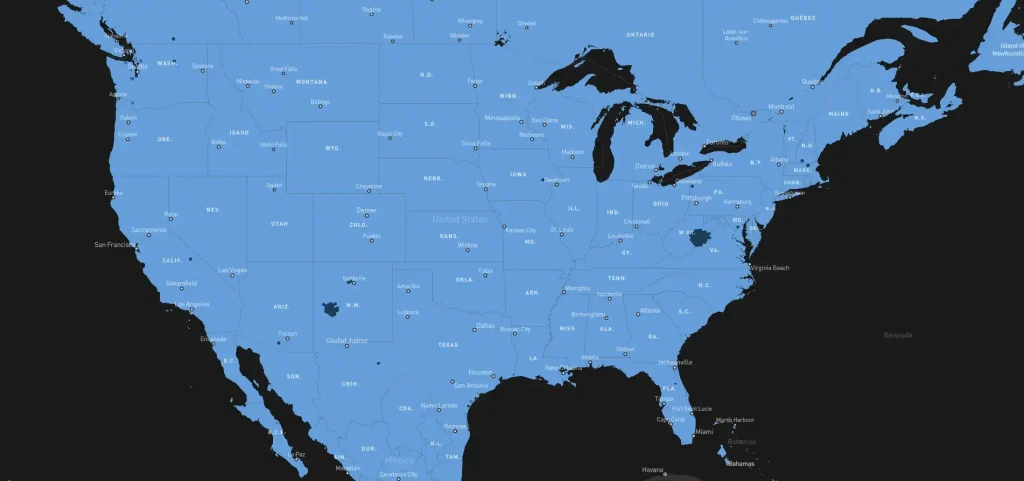
In an increasingly connected world, reliable internet access is essential for everything from communication to business operations. Starlink, the satellite internet constellation project developed by SpaceX, aims to provide high-speed internet access across the globe, even in the most remote areas. Understanding the Starlink map of coverage is crucial for potential users and businesses considering this innovative solution. This article delves into the current and projected coverage of Starlink, highlighting its global impact, technological advancements, and the benefits it offers to various sectors.
The Global Reach of Starlink
Starlink’s mission is to bridge the digital divide by offering internet coverage to underserved and unserved regions. Unlike traditional internet providers that rely on ground-based infrastructure, Starlink uses a network of low Earth orbit (LEO) satellites. This innovative approach enables Starlink to provide internet access in areas where it was previously unavailable or unreliable.
Current Coverage Areas
As of 2025, Starlink has achieved significant milestones in expanding its coverage. Here are some key regions where Starlink is currently available:
- North America: Starlink provides extensive coverage across the United States, Canada, and Mexico, offering reliable internet access in both urban and rural areas.
- Europe: Many European countries, including the UK, Germany, France, and Spain, are covered by Starlink, benefiting from its high-speed internet services.
- Australia and New Zealand: These regions have embraced Starlink as a solution for connecting remote and rural communities.
- Parts of Asia: Starlink is gradually expanding its coverage in countries like Japan and the Philippines, with plans for further expansion.
- South America: Starlink is operational in Brazil and other parts of South America, providing much-needed internet connectivity to remote regions.
Expansion Plans
Starlink’s ambitious plans include expanding its coverage to more regions and enhancing service quality. By launching additional satellites and improving ground infrastructure, Starlink aims to achieve near-global coverage. Key future expansion areas include:
- Africa: Plans are underway to bring Starlink’s services to various African countries, addressing the continent’s significant connectivity challenges.
- Southeast Asia: With its dense population and numerous islands, Southeast Asia presents a unique challenge that Starlink aims to overcome.
- Remote Islands and Polar Regions: Starlink’s technology is particularly suited for providing internet access to remote islands and polar regions, where traditional infrastructure is impractical.
Technological Advancements
Starlink’s success is driven by continuous technological advancements. Key innovations include:
- Low Latency: Starlink’s LEO satellites orbit much closer to Earth than traditional satellites, resulting in lower latency and faster internet speeds.
- Scalability: The modular design of Starlink’s satellites allows for rapid deployment and scalability, ensuring that coverage can be expanded efficiently.
- User Terminals: Starlink’s user terminals, also known as “dishy,” are designed for easy installation and optimal performance, even in challenging environments.
Benefits of Starlink Coverage
Starlink’s expansive coverage offers numerous benefits across various sectors:
- Residential: Home users in rural and remote areas can access high-speed internet, enabling online education, remote work, and streaming services.
- Commercial: Businesses in underserved regions can enhance their operations with reliable internet connectivity, supporting everything from e-commerce to communication.
- Marine: Starlink provides maritime vessels with stable internet access, improving navigation, safety, and crew welfare.
- Aviation: Airlines can offer passengers in-flight internet connectivity, enhancing the travel experience.
- Emergency Services: Starlink’s ability to provide internet access in disaster-stricken areas aids in emergency response and coordination.
Conclusion
Starlink’s coverage map continues to expand, bringing high-speed internet access to more regions worldwide. With its innovative technology and ambitious expansion plans, Starlink is poised to revolutionize global internet connectivity, bridging the digital divide and offering reliable internet access to all. As Starlink progresses, its impact on various sectors will become increasingly significant, making it a key player in the future of global communication.
FAQs
- How does Starlink provide internet coverage? Starlink uses a network of low Earth orbit (LEO) satellites to provide high-speed internet access across the globe, even in remote areas.
- Where is Starlink currently available? Starlink is available in parts of North America, Europe, Australia, New Zealand, Asia, and South America, with plans for further expansion.
- What are the benefits of Starlink’s low latency? Low latency results in faster internet speeds and improved performance for activities such as online gaming, video conferencing, and real-time data transmission.
- Can Starlink be used in remote and rural areas? Yes, Starlink is designed to provide reliable internet access in remote and rural areas where traditional internet infrastructure is lacking.
- What are Starlink’s future expansion plans? Starlink aims to expand its coverage to Africa, Southeast Asia, remote islands, and polar regions, with continuous improvements in service quality and scalability.


